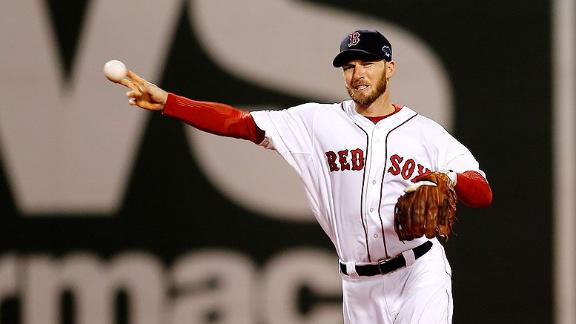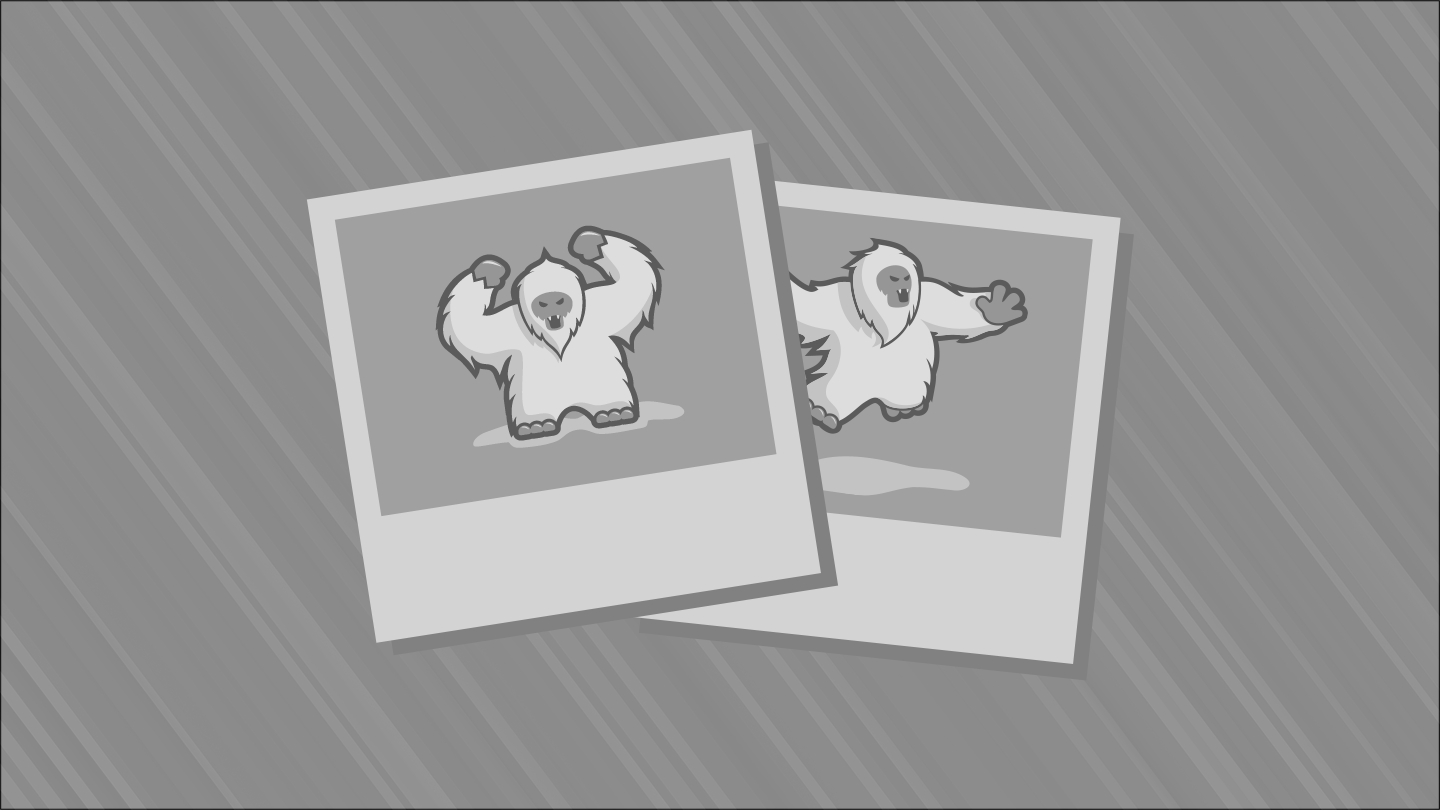Let's take a look at a couple of players that could have significant roles on the 2014 New York Mets.
Player A:
2012-.309/.348/.657
2013-.333/.443/.777
Player B:
2012-.360/.335/.696
2013-.333/.351/.685
With Player A you get a tick or so more power, but
Player B has the potential to get on-base more often.
Player A is over 6 years older than Player B.
Player A WAR (Fangraph):
2011-1.7
2012- -0.3
2013-3.4
Player B WAR (Fangraph):
2011-1.6
2012-1.8
2013- -0.3
Player A’s WAR jumped to over 3 from a negative
WAR the previous year. Player B’s 2013 WAR was identical to Player A’s 2012
WAR. In 2011 they each would’ve contributed the same amount of Wins to your
team.
Was Player A’s 2013 WAR an anomaly? -0.7, 1.6,
2.0, 4.7 were his pre-2011 WARs. As you see Player A is capable of a big
season, but it’s also just as possible for the reverse to be true. Player B
would give you roughly the same WAR every year, although in fairness to Player
B, because of his age and experience, those WAR numbers could jump as he
matures as a hitter. Conversely, a WAR around 2.0 may be his ceiling.
But as you can see, aside from a couple of
seasons, Player A will give you about the same WAR as Player B. The potential to exceed his baseline WAR of
around 2.0 is enticing, but given his potential to give you a negative WAR, is
it worth a multi-million dollar contract?
Let’s move on to fielding. We’ll look at the UZR
(Ultimate Zone Rating) and more traditional fielding % for Player A and Player
B.
Whats UZR?
Essentially, UZR puts a run value to defense, attempting to quantify how
many runs a player saved or gave up through their fielding prowess (or lack
thereof).
For more on UZR http://www.fangraphs.com/library/defense/uzr/
So using that as a tool here’s what we find.
Player A UZR:
2011-4.3
2012- -7.0
2013-5.3
Player B UZR:
2011- -0.1
2012-0.9
2013-0.2
Using the past three seasons as a guide you can
see that Player A can give you anywhere from Above Average to almost Poor
Fielding at his position. Player B will consistently give you average, solid
defense at the same position. Was 2012 a case of one bad season in the field
for Player A? -12.4, -15.9, 2.6, 8.9 were his UZR’s in the seasons preceding
2011. As you can see Player A is just as up and down in the field as he is at the
plate. But even at his best he will not give you Gold Glove caliber D and when
he tanks, well it can be disastrous. In defense of Player A’s defense, those
-12.4 and -15.9 occurred his first two full seasons starting in MLB.
As for Player B, those represent his UZR for the
first few seasons of his career and just as Player A improved in the field the
following seasons it would stand to reason that Player B would as well. He may
even give you defense comparable to Player A as he progresses defensively at
the position.
Now let’s look at both players defensive from a
Fielding % view.
Player A:
2011-.980 119 PO/219 A/ 7E
2012-.972 84 PO/190 A/ 8E
2013-.984 176 PO/332 A/8E
Player B:
2011-.956 53 PO/120 A/8E
2012-.974 164 PO/280 A/12E
2013-.969 72 PO/177 A/ 8E
By traditional fielding metrics Player A is the
stronger defender fielding % wise. Player B makes more errors, most of those on
throws, while Player A is more susceptible to booting a ball every now and
then.
17, 14. 11. 10-Those are the error amounts for
Player A from 2007-2010. He has improved his play in the field dramatically
since he debuted in the league. Couldn’t the same be said for Player B? His
defense is mediocre right now, but at a similar juncture in his career and age,
Player A was awful.
It’s obvious that Player A carries a much higher
upside offensively and has a slight advantage defensively. The downside to
Player A is his tendency to have seasons where he’s well-below average at the
plate and in the field.
Entering his age 31 season Player A is pretty much
the player he will be, in fact, a slight decline may start to occur. Player B
is 24 and despite his inconsistencies, still young enough to grow as a player.
His best seasons are more than likely ahead of him. Can the same be said for
Player A?
Of course you’ve probably already figured out:
 |
| Player A is Stephen Drew |
 |
| Player B is Ruben Tejada |
I didn’t write this with a view one way or the
other about either SS. I wanted to put together some combination of hitting and
fielding statistics to demonstrate what each have done in the past. Using that
as a guideline as well as their ages to come up with an idea of what each could
contribute going forward.
I think Stephen Drew is an injury and performance
risk. He’s drastic home/away splits both with Arizona and Boston. But overall
has hit all right in Citi Field. You’d have to imagine a drop in power would
occur. But Tejada is so devoid of HR pop that anything over half a dozen is a
huge improvement. The question is how many more Wins can Stephen Drew add to
the 2014 and 2015 Mets? Would it be enough to invest $10-12 million dollars
over the next couple of years? Tejada is the safer option, but is he the best
option between the two?
Should the Mets stick with Ruben or roll the dice
on Drew? It might become the most crucial decision made by the team this
offseason.


For me Drew is just not 11million dollar per year worth + you will lose your 3rd round pick. I stay with Ruben.
ReplyDeleteDrew will cost more than 11 million...He turned down 14 when he declined the qualifying offer.
ReplyDeleteAlso if Boston offers 2 years 26 million, the Mets would have to offer 3 years 45 million...Its the Mets...
I don't know if Drew will get a 2/$26 offer from Boston unless he comes to them with some other team's 2/$26 offer. Just because he turned down the $14MM QO doesn't mena he won't accept a 2/$22 offer. The extra year seems to be as important as AAV. (See Curtis Granderson) And if he got a 2/$26 offer from the Red Sox, he might well accept a 3/$33 offer from the Mets.
ReplyDeleteThat said, I really don't think Drew is worth that kind of money when there seems to be so many quality trade opportunities out there. I imagine Alderson will be very active in seeking a trade, although he seems to value Drew, and he may therefore hang back waiting for Drew's price to drop. I just wonder if he will regard an experienced SS (Aybar, Escobar, Lowrie) higher than a rookie or a prospect. (Gregorius, Owings, Franklin, Miller)